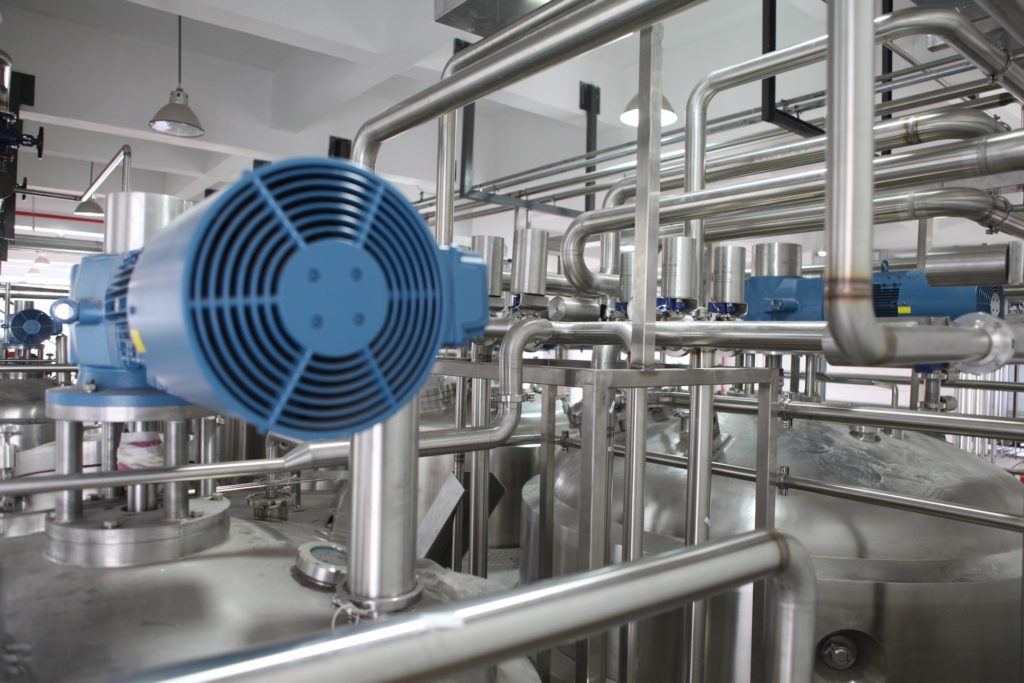A high-quality and the right type of compressed air dryer is crucial for optimal performance and productivity, especially in industrial processes like chemical compound synthesis, oil and gas exploration, food and beverage manufacturing, and pharmaceutics. Before we share the different types of air dryers and their differences, here is a quick overview of what a compressed air dryer is.
Compressed Air Dryer- What Is It?
The atmospheric air has water vapors or humidity. The amount of water the air holds largely depends on the pressure and temperature. The excess moisture in the compressed air falls out in the form of liquid condensation due to the high pressure at the discharge of the air compressor, while the additional moisture remains as water vapor in the air stream. This is where the problems begin.
The liquid that falls out in the form of condensation in the condensed air pipes increases the risk of corrosion, thereby damaging the pipelines. Furthermore, the water vapors and moisture that remain in the compressed air, especially for pharmaceutical applications and food processing, can result in spoilage.
Therefore, compressed air dryers are needed to remove excess moisture in the air and lower condensation or dew point.
Different Types of Air Dryers
The three most common types of air dryers are membrane compressed air dryers, refrigerated dryers, and desiccant air dryers. Though all these three air dryers are designed to remove moisture from the compressed air, they have significant differences. Let’s take a look:
Membrane Dryer
A membrane dryer features a filtration system that works cohesively with the existing air system to remove water vapors and contaminants. It has a membrane with hollow fibers that are specifically designed to attract vapors when humid compressed air passes through it. Moreover, the moisture is gradually diffused and removed from the outer part of the membrane.
However, its performance is closely tied to the pressure. So, the higher the pressure in the system, the better the performance of the membrane dryer. Please note that it doesn’t use any refrigerating agent for operation.
Refrigerant Dryer
On the other hand, the refrigerant dryer functions by using air-to-air or air-to-refrigerator heat exchange. The heat exchange helps cool the incoming compressed air. It results in cool and dry outgoing air, which further helps lower the temperature of the incoming warmer air.
It’s vital to understand that the temperature of the incoming air is reduced via liquid refrigerant to three degrees Celsius. At this temperature, water vapors condense into water and drain off. The refrigerant dryer’s water trap collects liquid expelled through the automatic drain.
Refrigerant dryers can lower the dew point to approximately ~38°F, which is adequate for pneumatic tools. Refrigerant dryers are a good option for applications requiring dry air without moisture.
Desiccant Air Dryer
The mechanics and performance of desiccant air dryers make them a preferred choice and different from their counterparts. The system embedded in a desiccant air dryer removes the water vapors present in the air via adsorption. The adsorptive materials installed inside the dryer attract the water molecules, which bind them to the material’s surface. It features tiny micropores that increase the surface available for adsorption.
Typically, desiccant air dryers use activated alumina sieve desiccants. Most systems have two layers of desiccant beads for smooth, seamless, and continuous operation. It allows the system to alternate between the two layers –allowing one layer to dry the compressed air and the other to regenerate the desiccant material. Compared to a refrigerant air dryer, the air produced by a desiccant air dryer is drier. And this is even from the fact that the desiccant dryers can reduce compressed air dew point to -40°F or even -100°F.
Desiccant air dryers are also growing increasingly popular because they have the power to operate in freezing conditions. On the other hand, refrigerant air dryers can’t lower the dew point to avoid condensation freezing.
Besides this, desiccant dryers use compressed air and energy to regenerate the desiccant materials spent. They can use a compressed air supply of between 5 and 8 percent in the regeneration process. Desiccant air dryers can be categorized into three types. These are the following:
- -Heatless dryer, which uses 18 percent of the rated dryer capacity to smoothly purge back via the saturated tower for the process of regeneration
- -The heated dryer is designed to heat the lower flow of purge air by nearly 5 to 7 percent needed to regenerate the desiccant material.
- -Blower purge desiccant dryer uses little to no compressed air for the process of regeneration. Instead, it uses heat with a blower. Though it uses more energy for operation, it preserves the supply of compressed air.
Overall, desiccant air dryers are excellent for moisture-sensitive commercial and industrial applications such as:
- -Mold prevention
- -Food processing
- -Manufacturing fabric
- -Healthcare
- -Ice rinks
How to Choose the Right Compressed Air Dryer?
As there are multiple options to choose from, here are some questions that you must answer to make the right air dryer selection. These include:
- What is the dew point requirement for your application?
- What are the ISO ratings required to carry out your application?
- Do you need ultra-dry air?
- Will you operate above or below 38°F?
- Do you want the air dryer cycle to run consistently?
- Would you be ramping up and down the application with demand?
Once you have the answers to these questions, navigating your options and making the best selection will be easier. However, getting in touch with an expert is advisable to make an informed choice. Contact our specialist at Super-Dryer Systems to discuss your compressed air dryer needs. We’ll help you develop a solid understanding and evaluate and compare your options to make the right selection that delivers you high returns in the long run.


